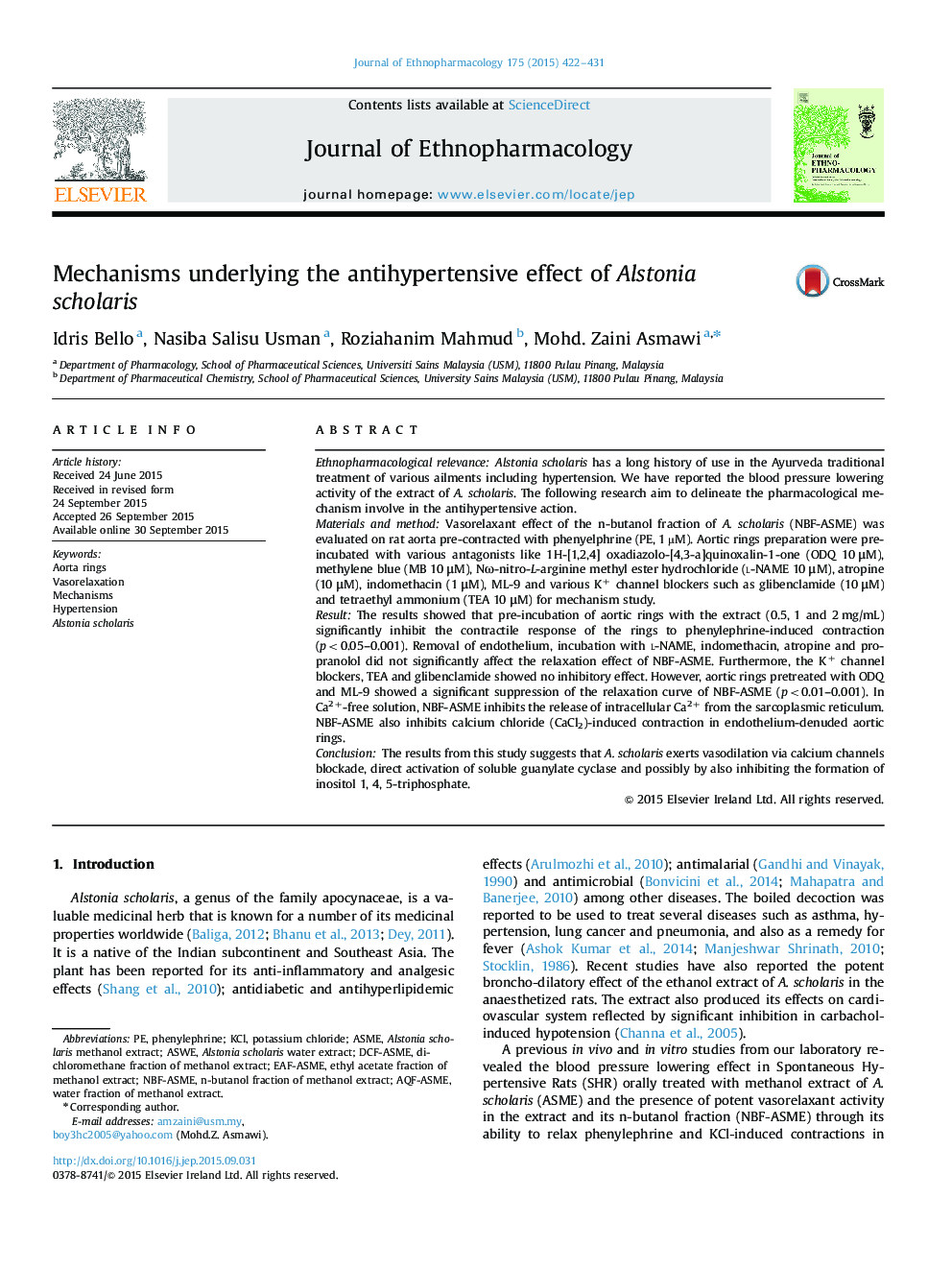| کد مقاله | کد نشریه | سال انتشار | مقاله انگلیسی | نسخه تمام متن |
|---|---|---|---|---|
| 2544936 | 1560387 | 2015 | 10 صفحه PDF | دانلود رایگان |

Ethnopharmacological relevanceAlstonia scholaris has a long history of use in the Ayurveda traditional treatment of various ailments including hypertension. We have reported the blood pressure lowering activity of the extract of A. scholaris. The following research aim to delineate the pharmacological mechanism involve in the antihypertensive action.Materials and methodVasorelaxant effect of the n-butanol fraction of A. scholaris (NBF-ASME) was evaluated on rat aorta pre-contracted with phenyelphrine (PE, 1 µM). Aortic rings preparation were pre-incubated with various antagonists like 1H-[1,2,4] oxadiazolo-[4,3-a]quinoxalin-1-one (ODQ 10 μM), methylene blue (MB 10 μM), Nω-nitro-L-arginine methyl ester hydrochloride (l-NAME 10 μM), atropine (10 μM), indomethacin (1 μM), ML-9 and various K+ channel blockers such as glibenclamide (10 μM) and tetraethyl ammonium (TEA 10 μM) for mechanism study.ResultThe results showed that pre-incubation of aortic rings with the extract (0.5, 1 and 2 mg/mL) significantly inhibit the contractile response of the rings to phenylephrine-induced contraction (p<0.05–0.001). Removal of endothelium, incubation with l-NAME, indomethacin, atropine and propranolol did not significantly affect the relaxation effect of NBF-ASME. Furthermore, the K+ channel blockers, TEA and glibenclamide showed no inhibitory effect. However, aortic rings pretreated with ODQ and ML-9 showed a significant suppression of the relaxation curve of NBF-ASME (p<0.01–0.001). In Ca2+-free solution, NBF-ASME inhibits the release of intracellular Ca2+ from the sarcoplasmic reticulum. NBF-ASME also inhibits calcium chloride (CaCl2)-induced contraction in endothelium-denuded aortic rings.ConclusionThe results from this study suggests that A. scholaris exerts vasodilation via calcium channels blockade, direct activation of soluble guanylate cyclase and possibly by also inhibiting the formation of inositol 1, 4, 5-triphosphate.
Figure optionsDownload high-quality image (162 K)Download as PowerPoint slide
Journal: Journal of Ethnopharmacology - Volume 175, 4 December 2015, Pages 422–431